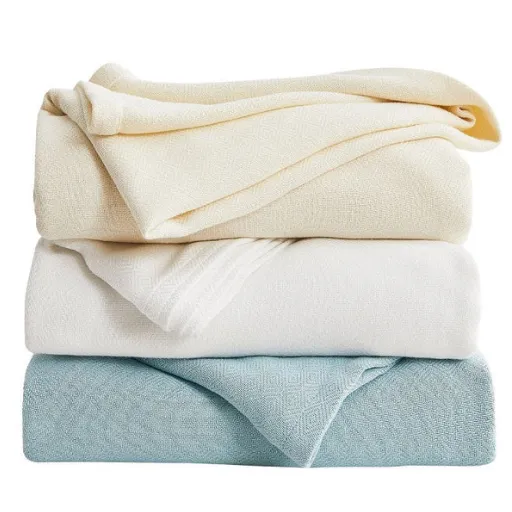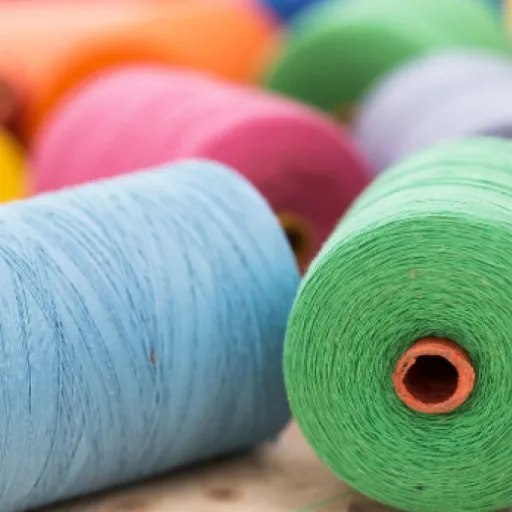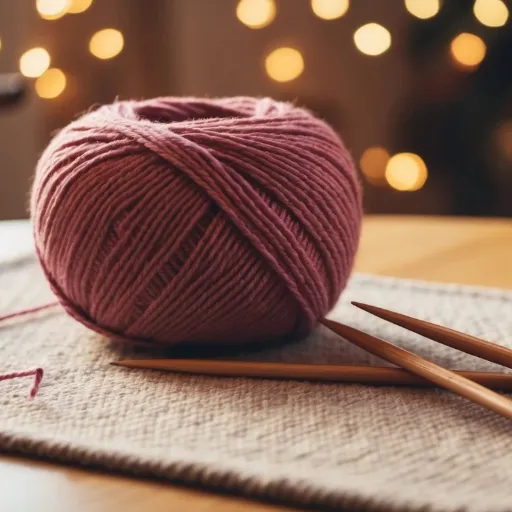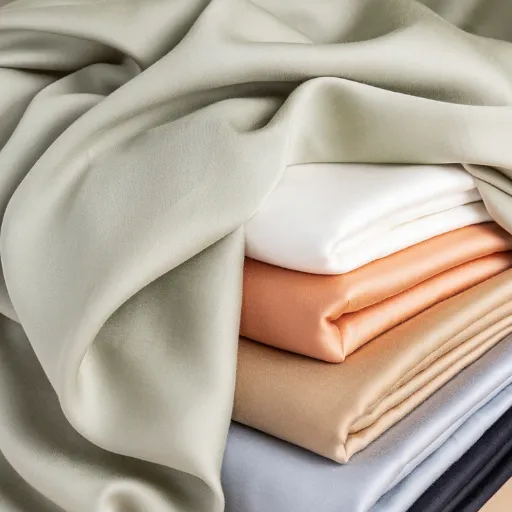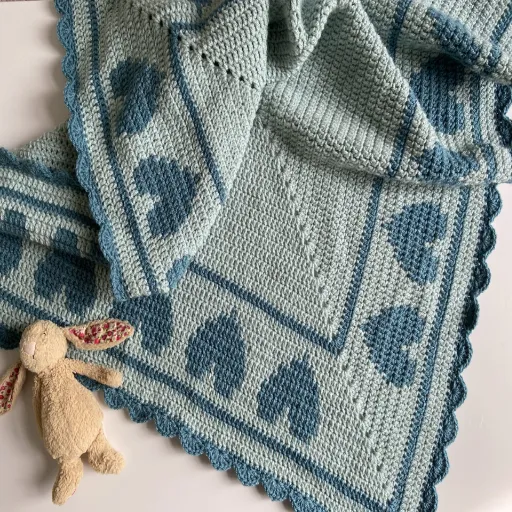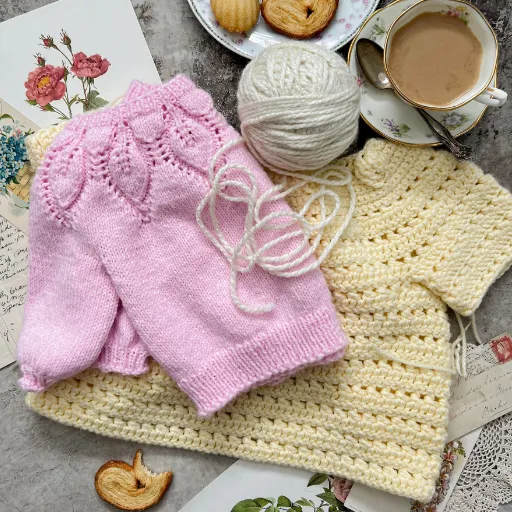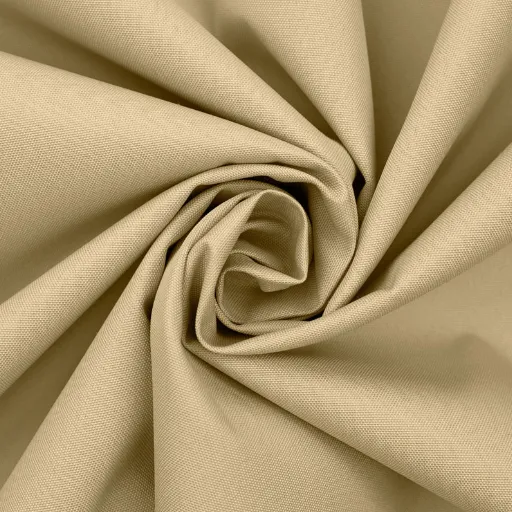Warmth is usually at the top of the list concerning yarn selection for sweaters and blankets. All types of yarns existing in the market, acrylic and wool yarn are certainly the two most widely used. So how do they keep one warm? Are you a knitting expert with the whole set of knitting needles for all project types, or is this your very first project? Understanding these material differences can help you in deciding. This article will explore the main factors influencing warmth while seeking to unravel the particular qualities of acrylic and wool yarn. Eventually, this will shed light on which yarn fits best for your next big assignment in cold weather.
Understanding Acrylic and Wool Fibers
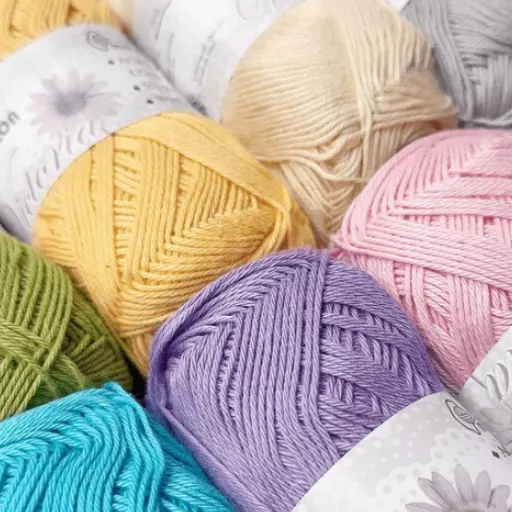
What is Acrylic Fiber?
Acrylic fiber is a synthetic fiber material derived from the polymer called polyacrylonitrile. It is a chemical process that results in altering the polymer into heavy-duty fibers, versatile, with a texture and appearance very much like those of natural wool. Acrylic is the name given to a type of fiber used in clothing, upholstery, and knitwear that is inexpensive and readily available.
Acrylic fiber, by nature, is lightweight and warm, making it a suitable choice for natural fibers such as wool. It is water-resistant, mildew-resistant, and resistant to color fading, especially ideally suited for everyday wear, which generally involves lots of washing and a fair number of hours of exposure to the sun. Besides being pretty usable, acrylics are also generally rather soft to the touch, stretch well, and are found in nearly every shade possible.
The conflict comes like acrylic fibers. Being manufactured synthetics, the acrylic fibers will not vent well with environmental perspiration through conduction and evaporation. Some look at them as thus warmer. Another argument is that because the fiber is the product of chemical treatment of petroleum-based synthetic polymers and because they are not deemed really degradable by the environment, acrylic performs against environmental protection. However, practicality and economy make acrylic fiber all-purpose and enjoyed for a host of crafting and textile applications.
What is Wool Fiber?
Wool Fiber is a natural fiber acquired mainly from the fleece of sheep. It is composed of keratin, a protein that imparts elasticity, strength, and resilience to the fiber. Wool is very much appreciated for its softness, warmth, and water-repellent properties, which make it a preferred textile material for clothes and home décor.
A great temperature-regulating property is bestowed upon wool. Wool fibers, having some natural crimp and loft, trap air and give insulation to maintain body warmth in cold conditions and keep it cool on warmer days. Then again, wool absorbs moisture but doesn’t feel wet, thus helping to keep the wearer comfortable while doing some activity or during weather.
Given that wool is biodegradable and renewable, it stands as a green alternative to synthetic ones. Since it is long-lasting and keeps its shape from prolonged use, the wool has few odors that may make frequent washing essential. Hence, these features make it a versatile and sustainable choice in many applications.
Properties of Acrylic and Wool Yarn
For instance, if the wool has its inherent advantages, acrylic might have some on its own; on the very opposite, the two fibers are different in constitution and in their uses:
- Breathability and Warmth: Wool is strongly insulating and breathable, thereby regulating the temperature of the human body in view of varying climatic conditions. Acrylic, while warm, does not allow proper breathability like wool, from which perspective it is not all-weather wear.
- Strength: Acrylic does not give much wear and tear allowance and also keeps its shape as time passes. Wool, on the other hand, if properly cared for, stands the test of time better but tends to pill or shrink under improper handling.
- Sustainability: In a sense, wool is an environmentally friendly material, being biodegradable and renewable. Acrylic, in contrast, is petroleum-based and non-biodegradable, which raises environmental concerns.
- Cost: Generally, acrylic can be bought at a lower price compared to wool, giving it more preference for budget projects. Wool, in general, is more expensive since it is a natural fiber, with expensive grades being more.
The Science Behind Warmth in Yarn
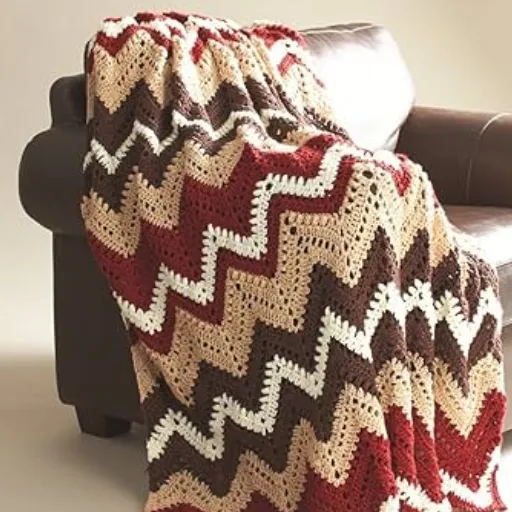
How Acrylic Keeps You Warm
Acrylic yarn keeps you warm mainly by holding heat. The acrylic fibers are designed to emulate the insulating properties of wool. They form tiny pockets of air between the yarns, helping retain body heat while not allowing that heat to escape in the colder environment. This makes acrylic yarn well-suited for winter putting on clothes and accessories example, sweaters, scarves, or blankets.
Another reason for warmth is water repellency. It does not absorb water quite so easily as natural fibers do. This property helps keep it insulating even if it gets damp or it’s humid, keeping the wearer comfortable and warm. Also, acrylic is a great fast-drying material, which comes in handy when clothes have been exposed to snow or rain.
Finally, the property of being lightweight regarding acrylic yarn makes it attractive as a warm material. These options are being offered by acrylic yarn-the warmth, moisture-repellent nature, and light weights-while avoiding bulkiness with which some heavier-weight yarns get identified. This, in turn, makes acrylic a favorite among knitters and industrialists working with yarn for designing charming cold-weather apparel.
How Wool Keeps You Warm
Wool keeps you warm through its unique insulating properties. It is a natural fiber that traps tiny pockets of air between its fibers, creating a layer of insulation. This trapped air helps to retain your body heat, even in cold weather conditions. Unlike some materials, wool is also effective at keeping you warm even when it is wet, as its fibers can absorb moisture while still maintaining warmth.
Another key feature of wool is its breathability. Wool fibers allow moisture, such as sweat, to escape while keeping external moisture at bay. This prevents the material from becoming clammy or uncomfortable, ensuring you stay warm and dry. Wool’s ability to regulate temperature makes it suitable for both cold and mildly warm environments, providing comfort across varying conditions.
Wool is also naturally resilient and durable, making it an excellent choice for cold-weather clothing. The structure of wool fibers provides elasticity, allowing garments to stretch and return to their original shape without losing effectiveness. This durability, combined with its warmth and moisture-resistant qualities, makes wool an ideal material for winter wear and outdoor activities.
Comparative Warmth: Acrylic vs. Wool
In terms of warmth, wool is usually considered a better insulator because of its natural structure. The very fibers of wool hold air pockets that trap heat, hence providing warmth at the cost of cold. Such attributes of wool make it a sure choice for keeping warm in winter or for outdoor activities while needing protection against the elements.
Acrylic, considered to be the synthetic variant of wool, does not really offer an equal level of heat retention. An acrylic garment is usually of less weight and less breathability than wool, hence posing the possibility of lower insulation in extreme cold conditions. In moderately cold temperatures, however, acrylic may prove warm enough and the price is much cheaper, hence is a worthy competitor.
Ultimately, the user decides between choosing acrylic and wool based on necessity. For extreme warmth and durability under cold weather, there is credence for wool. Acrylic, on the other hand, would be favorable in milder conditions and when affordability and easy care are considered. Each of the two has its own merit. Yet for giving continuous warmth in coarse weather, nothing can compare to wool.
Differences Between Acrylic and Wool Yarn
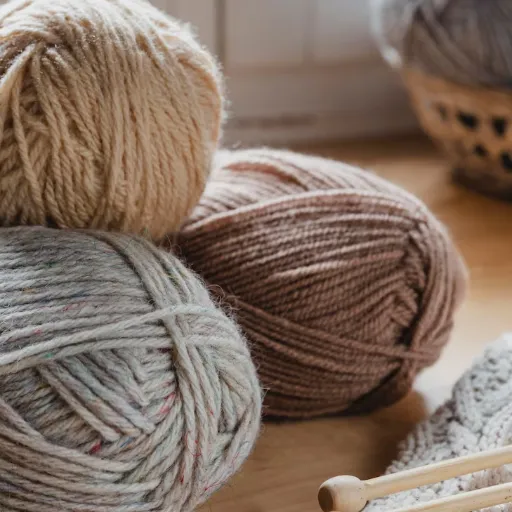
Texture and Comfort
In terms of texture and comfort, acrylic yarn and wool yarn stand apart. The wool yarn is kept soft by nature and is often chosen for its cozy and warm touch, especially in colder countries. It is both elastic and breathable, thereby rendering it comfortable enough to wear for a long period of time, especially in the case of clothes such as sweaters and scarves. Being good natural fiber, it adapts well with the body and becomes more comfortable.
An acrylic yarn, however, is somewhat harder in the purchase state yet can sometimes be treated to simulate the wool’s feel and finish when done very well. Whereas it lacks the natural elasticity that wool possesses, it could bring some comfort to daily use. Acrylic is also lightweight and great for projects that are supposed to feel softer and lighter, even if it doesn’t breathe as well.
In the end, acrylic or wool for texture and comfort really depends upon the usage and personal preference of the buyer. A wool choice might glitter with luxuries and warmth. Acrylic is, however, a good option for those wishing to use lighter materials-giving convenience plus cost advantage and comfy in the process! In other words, they are the two media satisfactorily meeting texture and usability depending on demands.
Durability and Maintenance
In terms of durability, both wool and acrylic do have their sets of advantages, which make their suitability for situations dependent on the circumstances. Given the natural resilience, wool is highly durable, that is, it is treated well. It resists abrasions to maintain its appearance for a very long time. In contrast, Acrylic should be considered less durable in the long term but it withstands destruction fairly well and resists damage from insects such as moths.
Wool and acrylic-keeps working- maintenance needs differ significantly. Wool, normally, demands more care, with requirements of hand-washing or dry-cleaning to keep its integrity and to avoid shrinking. With proper storage and careful act of washing, wool clothing could last a long time, and therefore such application is excellent for the warmth and feel of wool. Then again, acrylic is fairly easy to maintain, with its attributes of machine washing and quick drying elevating its status for those desiring a material with little apparent upkeep.
Essentially, one is weighing durability versus ease of care: wool is there for the long haul and provides maximum comfort and warmth but requires upkeep. It can also be pricey and time-consuming. Acrylic, meanwhile, offers an affordable alternative that comes with the added convenience of easy cleaning and great versatility. A clearer understanding of one’s specific needs and preferences makes it possible to select the right material for any use.
Cost and Availability
In the price comparison between wool and acrylic, a huge disparity appears. Wool is usually considered on the expensive side owing to its natural origin, the method of its production, and the quality it can promise. Other factors that influence the price of wool are, of course, the kind of wool (merino, cashmere, etc.) and the processing. It is often available only in specialty outlets and rarely available in many retail markets.
Acrylic is, conversely, known to be a cheap yarn material. Being synthetic and mass-produced, it can generally be expected to be cheaper than wool. Various stores can offer acrylic services, both online and in real life, and it is even sold in bulk quantities, thus almost making it accessible for anything one would want to use it for. Its cheapness and availability stand as the major reasons for its popularity, especially among those who are economically conscious.
Ultimately, this will be a choice that depends on what people value and prioritize. Those who value long-term investment and high quality may consider wool to be a worthy option regardless of price. On the other hand, wherever practicality and affordability come first, acrylic may be more suitable as an option for everyday use. These two materials are quite commonly available, depending on the need, taste, or budget of a person.
Choosing the Right Yarn for Sweaters and Blankets
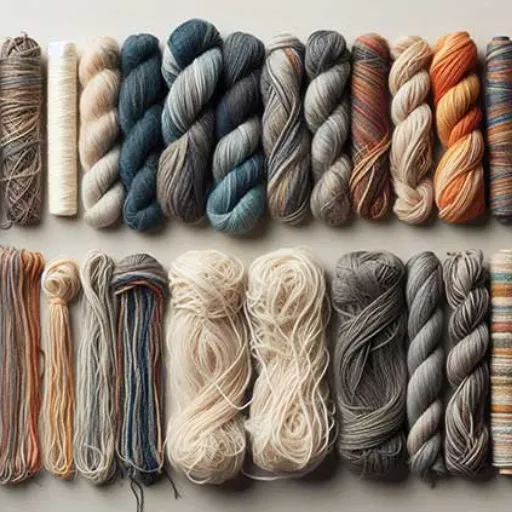
Factors to Consider When Choosing Yarn
| Factor | Description |
|---|---|
| Material and Fiber Content | The fiber type plays a major part in the yarn’s texture, strength, and warmth. Natural fibers such as wool and cotton are both breathable and excellent insulators while synthetic fibers like acrylic or polyester are usually cheaper and require less maintenance. For instance, wool is specifically associated with its heating capacity which makes it not only suitable for winter clothes but also for blankets. |
| Weight and Thickness | The weight of the yarn, ranging from lace to super bulky, sets the project’s texture and density. Knitting sweaters normally require worsted or aran weight yarn for warmth and durability, while for blankets, the use of chunky or super bulky yarn is common to achieve quicker completion. |
| Durability and Care Requirements | Soft blankets are usually made from machine-washable yarns, which is a big plus for high-use items when they tend to laundry frequently. Acrylic yarns are considered to be very durable, while a mix of wool has the quality of being both soft and easy to take care of. For instance, “superwash” wool can withstand machine washing but still has the properties of keeping warm and being elastic. |
| Color and Dye Consistency | These days, the visual appeal of yarn is a critical factor when making garments or blankets through knitting or crocheting. The use of hand-dyed or variegated yarns gives the work a unique characteristic but the differences between lots of dyes could slightly affect the uniformity of the yarn. |
| Environmental Impact | The unspoken word is that sustainability is one of the most important factors in yarn selection. A company that provides environmental-friendly products like We Are Knitters not only sells organic cotton but also merino wool to people who care about the environment and their crafting habits. |
Considering these factors, the artisans may choose the perfect yarn that not only meets their particular needs, increases usability but also falls within their price range and is in line with their principles. Choosing wisely is a guarantee of not only the project’s success but also the result’s lasting satisfaction.
Best Uses for Acrylic Yarn
Acrylic yarn is an all-purpose and economical material, which you can use for various projects. Among its most prominent usages is making everyday items like blankets, scarves, and hats. Its long-lasting nature and easy maintenance make it a great choice for those pieces that will be often used or washed regularly. Besides, it is light and soft; therefore, it provides comfort at an affordable price compared to natural fibers.
Furthermore, an excellent use for acrylic yarn is to make items for little ones and babies. The yarn is hypoallergenic and usually machine washable, which makes it practical for baby clothes, toys, and accessories. Moreover, because of its wide color spectrum, it can be used to create vibrant and playful designs that attract children’s attention to an extent that they will be drawn into the world of colors.
Another aspect is that acrylic yarn is often a preferred material for inexperienced artists or trial projects. The low price and easy supply make it possible for the beginners in knitting or crocheting to practice without worrying about the use of materials. Besides, its forgiving characteristic allows the crafter to work more easily; for example, in unraveling or fixing mistakes, ultimately this will keep building the confidence of those who are developing their skills.
Best Uses for Wool Yarn
Wool yarn is a material that can be used for many purposes, as it is very soft, warm, and strong. Its natural properties of heat retention make it the best choice for making clothes that are to be worn in winter, for example, making sweaters, scarves, hats, and gloves. Wool is especially used in such items for colder winters or places because it gives comfort and keeps the wearer protected from cold at the same time.
One of the main uses of wool yarn is making blankets and throws. Wool’s softness and longevity make these projects both cozy and long-lasting, thus they become favorite household items which are used daily. The fact that wool absorbs moisture, makes blankets not only warm but also breathable, which means they can be used in various temperature and humidity conditions.
Wool yarn is another one that can be easily used for felting projects as the fibers get bonded and shrunk when exposed to heat, moisture, and pressure. This quality makes it a ‘must-have’ material for making hard and long-lasting items like bags, slippers, or even sculpture. Finally, wool yarn’s tremendous versatility and unique traits come to the forefront and thus it remains popular with crafters of all kinds, whether they are for practical or artistic purposes.
Washing and Caring for Acrylic and Wool

How to Wash Acrylic Fabrics
Acrylic fabrics are the kinds that you do not have to bother much with, and still achieve the same look. For washing acrylic fabrics, you can apply either cold or warm water together with a mild detergent. Check the care label on the garment for any specific instructions; it is possible that some acrylic blends come with further requirements. It is recommended to stay away from hot water since it may result in fiber deformation or shrinkage.
While hand-washing, gently agitate the fabric in the soapy water for a few minutes and avoid vigorous scrubbing to prevent unnecessary wear. In the case of machine washing, always opt for a gentle cycle so the fabric does not get too much friction. Putting the piece in a mesh laundry bag can give extra protection, particularly for delicate fabrics.
After washing, dry flat acrylic garments to avoid stretching or deforming. If a dryer is a must, use the low-heat setting. Do not wring the fabric as that will probably change its shape. The right maintenance will keep acrylic fabrics soft, strong, and really bright in colors for a long time.
How to Care for Wool Fabrics
The quality and life span of wool fabrics are highly dependent on the care and handling they receive. The very first step is to study the care label attached to your wool garment as different types of wool may have their own washing instructions. In most cases, it is recommended to hand wash the wool in cold or lukewarm water with a mild detergent prepared especially for the wool. If it is the case that a washing machine is used, choose the delicate or wool setting for the least agitation possible.
After the washing process, don’t wring or twist the fabric as this will surely distort the wool’s fibers. Rather, squeeze out the dressing by putting it flat between clean towels and using pressure. Wool items should always be dried flat on a clean, dry surface to hold their shape. Do not hang wet wool as it is likely to become elongated. And, during drying, keep wool away from direct sunlight and heating sources, as they cause shrinkage and damage.
Proper storage is one other very important thing that needs to be done in order to keep wool fabrics in a good condition. Wool garments should be kept in the cold, dry area and if possible in the breathable storage bags, as this will stop moisture build-up. Use sachets made from cedar or lavender to repel moths and at the same time stay away from chemical moth repellents. If you stick to these steps, your wool garments will remain soft, durable, and comfy for a long time.
Common Myths About Yarn Care
Myth 1: Washing Yarn Will Ruin It
One of the most frequent misunderstandings is that washing yarn will result in damage to the fibers or in the yarn coming apart. In reality, the majority of yarns are wash fast, and they should be washed at least with water if it is done in the right way. First of all check the care label on your yarn for specific instructions. Very gentle yarns like wool or alpaca need a very gentle wash with cold water and mild soap. All this done properly helps not only to keep the yarn clean but also to keep it strong and to prolong its life.
Myth 2: All Yarns Require the Same Care
Another myth or misconception is that all yarns require the same care. Different kinds of yarn such as cotton, acrylic, or wool require different care methods. For example, in most cases, acrylic yarn can be washed by machine, while wool is better off being washed by hand to avoid shrinkage or felting. Knowing the fiber content of your yarn is vital for giving the right care.
Myth 3: Yarn Care Is Time-Consuming
Some people think of yarn care as something that is too complicated or too time-consuming. Well, it could be very easy if you would take just a few simple steps such as proper yarn storage in a dry and clean area, and avoiding direct sunlight. Furthermore, using breathable storage containers, then to keep pests away from yarn, using natural repellents such as lavender will cut down on the maintenance. Basic care guidelines are the key to your yarn’s great condition with minimal effort on your part.
Frequently Asked Questions (FAQ)
Q: What is meant by the term acrylic warmth?
A: Acrylic warmth refers to the insulating properties of acrylic fibers created to retain heat effectively. The fiber is synthetic and petroleum-derived, a very good feeling fabric without the itchiness that could be a common feature of most natural fibers.
Q: Which one is warmer, wool or acrylic?
A: In comparison to wool acrylic, acrylic is a synthetic alternative that can imitate the warmth of wool without their itchiness. While wool does support better insulation and more suitable temperature regulation, acrylic is often easier to care for and better retains its shape with time.
Q: Are acrylics safe to be used by a person with a wool allergy?
A: Someone allergic to wool can safely use acrylic products. Since acrylic is not wool, it does not have those proteins that trigger allergic reactions, which makes it an appropriate wool substitute for those who are allergic to natural fibers.
Q: Why use acrylic blankets?
Answer: Acrylic blankets are perforated on the thermal insulation, hence, this means they tend to retain warmth, are light in weight, and easy to care for. Unlike wool, acrylic blankets can be washed without worrying about absorbing hard water that may make them lose shape or become itchy.
Q: Is it a suitable fabric for winter clothing?
A: Yes, truly so. It reflects warmth from within and is quite lightweight. Its heat-retaining nature gives way for these to be used with sweaters and shawls for comfortable wear in winter.
Q: How does wool differ from acrylic when it comes to washing and maintenance?
A: Essentially, maintenance is different between wool and acrylic simply because acrylic is easier to maintain. Acrylics usually can be washed and dried by machines, with no special treatments required; whereas wool often needs to be hand-washed or taken to the dry cleaners in order to keep its quality.
Q: How is acrylic yarn made? What are its properties?
A: Acrylic yarns come under the category of synthetic fibers obtained from petroleum products. They are very light in weight, durable, and resistant to moth attack, making it an excellent choice for crafts and apparel. It also provides warmth unlike wool yarn, which is itchy.
Q: Can acrylic fabrics be blended with other materials?
A: Yes, acrylic fabrics can be blended, say, with wool or polyester to improve their properties. For instance, an acrylic-wool blend provides the warmth of wool and cuts down on itchiness. Such a blend is mainly used for making sweaters and similar apparel.
Q: Why should I prefer acrylic over other synthetic materials?
A: Acrylic feels warm and soft, and it is a very easy-care fabric. Other man-made fibres may feel cheap or uncomfortable acrylic feels more like wool and has more options available in terms of applications in blankets or clothing.
References
-
Textile Yarn Blog: Discusses the heat retention qualities of acrylic and compares it to other materials like polyester. Read more here1.
-
Natural Clothing: Explains the properties of acrylic fabric, highlighting its warmth, lightweight nature, and wool-like qualities. Read more here2.
-
Reddit Discussion: A community discussion on the warmth of acrylic, including its limitations like breathability and moisture absorption. Read more here3.
-
Yardblox Fabric Guide: Provides an overview of acrylic fabric’s benefits, including its warmth, softness, and resistance to environmental factors. Read more here








